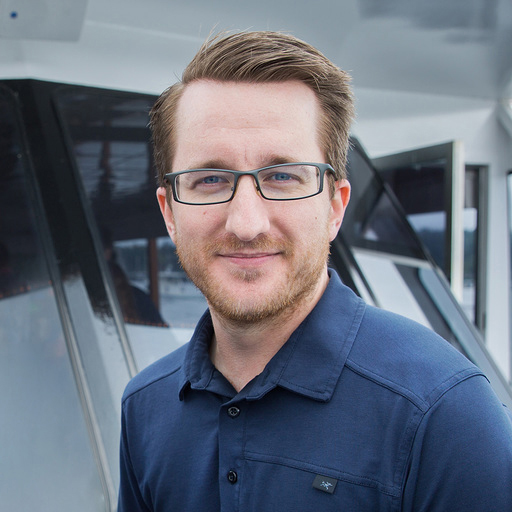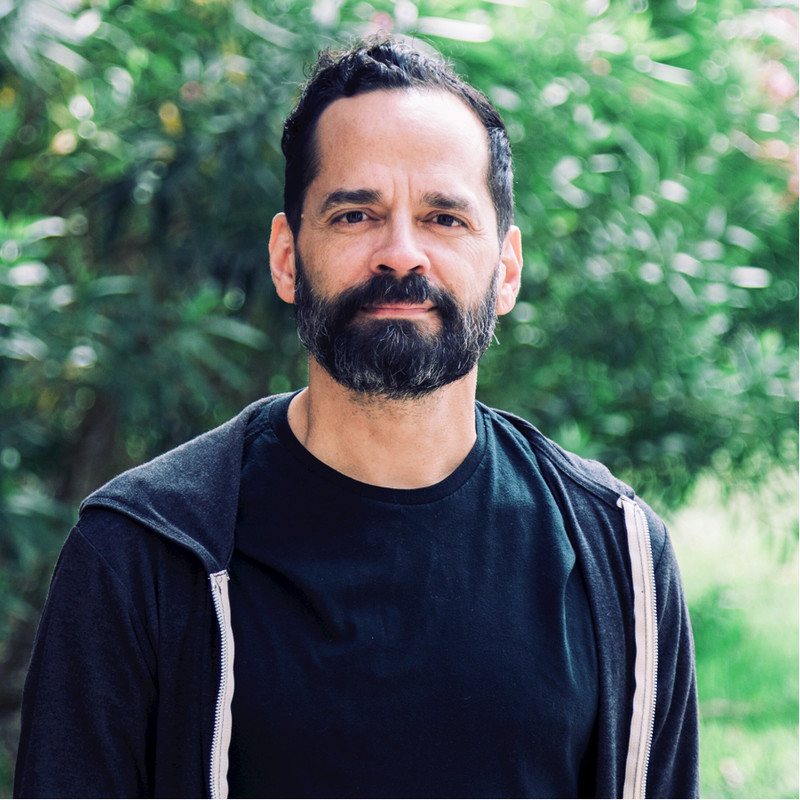···
Can you tell us a little about your background and how you got to where you are?
Victor Davila
**Parker Young: **Sure! As a kid, I had a huge passion for making things. LEGO creations, paper crafting, cardboard forts, you name it. When I got my hands on a VHS camcorder, I realized I could make anything! That realization started me on a long journey of video production, editing, graphics, and visual storytelling in general. I attended Full Sail University between 2009 and 2011 (Digital Arts & Design) and freelanced for 7 years in the Orlando area. This included lots of live event production with the theme parks and conventions. Working with live events and real time playback was awesome, I learned valuable workflow skills there. In 2016 my partner and I needed a change of scenery, so we moved to Seattle, WA 🚗 📦And shortly after that, I was hired at Microsoft to work in UX Motion, which was a new world for me. Our team works on a lot of the front-end experiences at Microsoft which requires a lot of knowledge about the web 🙂Fast forward to now, I’m still here (but still miss Orlando) and learning every day!
(that’s the super short version) haha
Do you have a Christmas tree, and if so, what is your most precious ornament (can we 👀 at it??)?
Cassie McDaniel
Sadly we do not have a tree this year! Part of that is due to our 1 year old puppy who’s notorious for unplugging Christmas tree lights 🤣But you can 👀a pic of him instead!

Thanks for doing this. I would love to learn more about
What does a typical day in your life look like ? What are the most fun/ exciting aspects of your role ?
Abhishek Murali
Of course, thanks for having me! Coffee in the morning is basically a legal requirement in Seattle ☕️ But a typical day starts with addressing feedback or questions from the day before, since our team is spread around the globe. Then, we’ll hold a morning design review where members of the team can share what they are working on and gather feedback from a wide range of disciplines. After that, we start with the high priority items and try to connect with stakeholders before they break for lunch 🍽 In the afternoon, it’s usually a mix based on the day. A lot of times we’re working on new features and need to sync with engineers for questions or results from the latest tests. Other times we’re working on external assets that need legal review or content writers approval. Sometimes work ends early, other times I’ll put an extra hour or two in to make the next day a little easier.
Sounds like a packed day! How big is the design team that’s spread around the globe?
Abhishek Murali
I don’t have the exact numbers but our core team in Seattle is about 40 designers (part of a larger design group of around 200) and then we have smaller teams in India, China, and Europe that make an additional 30-40 (i think)
What are some of your favorite resources for finding and figuring out expressions (btw, I love the ones available on your website, I’d love to hear of others)?
Anna McCarty
Oh this is a good question! Something I am super passionate about 🙂
I have a 5-hour course on expressions hosted for free on YouTube and my personal site, I recommend that for an end-to-end look at what they can do:
https://www.animoplex.com/learn/expressions.html
Another good resource is the Ukramedia YouTube channel, they have some great in-depth tutorials on specific methods:
https://www.youtube.com/channel/UCy6HtPOm8Hc5zLqE1UAYa8A
And finally there’s the School of Motion course from Zack and Nol:
https://www.schoolofmotion.com/expression-session
How do you know you’re successful when finishing a motion design project?
Kyle Harter
Tough question! Measuring success is tough to do in UX motion design. The end results will manifest in how someone feels during the experience and is largely intangible. You’ll occasionally get direct feedback on motion in the product, but a lot of times feedback is associated with the element it’s applied to. Comments like “I love how this menu feels!” could be talking about the design, the loading times, or the transitions in between.
Ultimately, motion that ships with the final software is a success. The best motion tends to go unnoticed, so no feedback is good feedback 🙂And it’s a huge success if other teams take notice and want to borrow it for their own applications.
How does one make a transition from a role as a motion design generalist into a UX motion designer? What skills are transferrable? What skills should one develop?
Kyle Harter
These are questions from my own journey as well! The transition from general motion design to UX motion design is mostly about finding new applications for your existing animation knowledge. You don’t stop really being a generalist, you just spend more time in the design process. And it’s important to understand that the purpose of your motion has changed; instead of marketing products or captivating people’s attention, you’re really just trying to help people successfully complete a task and then get out of their way. In my opinion it’s less glamorous but much more rewarding.
Design fundamentals are great to have, knowledge of animation software is a must, and general motion workflows are all similar. Two of the most important skills you need in UX motion are a great sense of timing and pixel-perfect accuracy. You should also be able to convert frames / seconds / milliseconds on the fly and work in many different time environments. Being able to identify ease curves on a 200ms menu transition and suggest improvements is not something you pick up overnight. Similarly, it’s tough animating a tiny mouse cursor’s path to imply the user is hesitating or thinking. Most of the details come down to a couple of frames or a few pixels until it feels just right 🙂
To piggyback on the first question about your background and career journey, you mentioned you did a lot with your hands, like cardboard forts and Legos, and then discovered the camcorder. Did you animate at an early age? And what were some of your early animation/design/artistic influences?
Victor Davila
Now we’re digging deep in the mental archives! A bit of a side tangent, but I was a bit of a perfectionist growing up. Like, I’d cry hysterically when I couldn’t draw a perfect circle 🤣So I would set off to build something (like a spaceship) for hours, stay up way past bedtime, and get to a point where I felt happy with it. The next day, I’d come back and critique my own work, change some things, and tweak until it was perfect. But with the camcorder, I only had start/stop recording so my storytelling was extremely linear. I’d shoot 10 scenes leading up to a moment and I had to be okay with the first takes being ‘good enough’ to avoid reshooting the whole thing. It broke me out of my shell a bit, made me realize that the creative process is messy and imperfect.
Sometimes I’d use the camcorder to film LEGO figurines in a dialog using my own voice. It was hilarious and so much fun as a kid. It taught me a lot about timing and stop-motion techniques like match cuts, skills that I still use to this day! I don’t recall any major early influences, but I watched a lot of cartoons on the weekends which I’m sure had some impact. Now that we have the internet, references and influences are everywhere! It’s so easy to get inspired from creative work out there, makes it easy to build your own visual library to reference later 🎨
That’s a great lesson we all eventually have to learn. I was told once “Don’t let perfection get in the way of good enough!”
Victor Davila
It’s great advice! Wrap it up and move on, there’s plenty of opportunities to ‘fix’ something in a future project 🙂
Can you share an experience where you didn’t think you could do something, that felt impossible, but that you managed to do anyway? Reflecting on it, what helped you accomplish that thing?
Cassie McDaniel
Good question! So this time last year, I spent the month of December designing and programming a web game for Microsoft Edge. It was a BEAST of a project, I remember thinking I had ‘bitten off more than I can chew’ multiple times a week. Game design and programming wasn’t something I had done before, it was one of those things that you assume is out of your wheelhouse and you’ll never be able to do it. But there I sat, with Microsoft trusting me to build this game (for their offline error page) with zero experience. I was the one who proposed the idea to the leadership team, which made the prospect of failure 10 times worse 😄 Thinking back, maybe I should have tried making a small game first to see if it was possible.
So we made the game. I designed the gameplay mechanics and programmed the thing using HTML Canvas and vanilla JS, and Scott Porterfield made all the artwork. My pitch was to re-theme an old Microsoft game called SkiFree to be a surfing game with a few additional features. It took over a month to produce and I had a 8 we ek old puppy running around my apartment the whole time. We weren’t allowed to use external libraries, so all of the gameplay physics, input handling, enemy logic, scoring, and level generation were all custom-built JS functions written by me. I read a lot of game programming books and watched a few courses as well. I had a Stack Overflow window open at all times on one of my monitors 😄
Reflecting back, there were times when I would hit a roadblock that completely stalled the development, which can be stressful. I think the ability to change the game’s core design to meet technical requirements was a great tool, underscoring the importance of understanding code as a designer. It would have been much harder designing this game with no knowledge of the technical limitations, or programming the game without a solid understanding of game design patterns and logic. I am also thankful of the team trusting me with this massive project and allowing me plenty of room to learn and fail. And finally, recognizing the amazing efforts of game development communities online, a thank you for sharing knowledge so openly and in-depth. This game wouldn’t be possible without all of the people pioneering in this space.
Finally, the game trailer:
https://www.youtube.com/watch?v=9u2exqfp4HY
You can play it in any version of Edge, just go to this url in the address bar:
edge://surf
What kind of challenges drive you to bring out your best work?
Kyle Harter
There’s no greater pleasure than seeing your work in the wild for everyone to enjoy and interact with! Personally, I always use new projects to try a technique or approach I’ve been thinking about recently; changing up the workflow, trying a new camera technique, new storytelling methods, etc. While a lot of our motion work is R&D and destined for archives, it’s always exciting to put motion directly into our software and create external marketing pieces for new features 🙂
How do you ensure the look/feel/experience of the motion design is consistent between the product UX and the product marketing?
Avery Smith
This is super important, we want marketing videos to reflect what the experience will actually feel like. There are two types of marketing videos that Microsoft shares; vision videos that are heavily stylized and evoke feeling, and videos that announce new features or share what’s new with a product or service. I’ll share links to examples of both below. For vision videos, the UX is abstracted to the point where you wouldn’t expect the software to match which helps us story tell in a fun environment. For product announcement videos, the UX matches nearly identical to the experience we have today, regardless of future intent or planned updates. This is because we’re announcing a feature and want the design and motion to be truthful and representative of what you could get today.
This is tough for a motion designer sometimes 🙂We might have beautiful animations in progress that will be released in 3 months but for the video next week we have to remove them. It’s always a sad day when you have to purposely animate using bad (or no) transitions when you have good animations lined up right around the corner. But consumers who interact with your product want to see what they will have today, not what will be in 3 months. We can ensure consistency because our team handles both types of assets. It’s great having a design team that contributes to external communications. I think they have a stronger connection to the product and have more stake than an external design team working on their behalf.
Example vision video:
https://www.youtube.com/watch?v=wYmTkgqbrDM
Example feature announcement video:
https://www.youtube.com/watch?v=eAjzJNA6Bpo
For our team this one can be tough because a feature in development may be in production by the time the video production is complete. Aligning the schedule for both is an interesting balancing act.
Avery Smith
That’s always part of our conversation as well. We have a video shipping in a few weeks that had that same issue. It’s definitely a balancing act!
What’s your favorite easing curve?
Kyle Hyams
You can’t go wrong with this one:
0.40, 0.00, 0.20, 1.00
https://cubic-bezier.com/#.4,0,.2,1
But I also love using this:
0.17, 0.17, 0.00, 1.00
https://cubic-bezier.com/#.17,.17,0,1
As we wind down this year and look forward to the next, anything in particular you can share that you’re looking forward to, either work or non-work wise?
Victor Davila
Work-wise, I’ve been working a lot on accessibility in motion and building more dynamic animation rules that take into account display scale, size and distance of the animation, user’s actions per minute, and system accessibility settings. There’s a lot you can infer about someone’s motion preference and tailoring it to their unique device and situation is important. In most software today, you’ll see a binary on/off for motion which is a good start. My hypothesis is there’s a range of motion or customization options here that may be friendlier. For example, maybe someone wants animated button rollovers but their right-click menu to instantly appear? Or a young kid on their family computer wants their profile to have extra bouncy animations! So work has been happening in this area and I hope to have an update on it soon :)
Personally, I am looking forward to the start of a new year and (maybe in a few months) some Covid-19 vaccines. My heart goes out to all who are affected by this, I hope everyone stays safe over the holidays. I just picked up Cyberpunk 2077 on Xbox and will be playing that over the holidays. And I’ve got some hikes planned in the next few weeks, and plenty of time off work to recharge fresh for 2021.
···
**Parker Young: **Thanks so much for having me! Thank you @Victor Davila for facilitating the discussion. If anyone has follow up questions or missed the AMA window, please send me a DM and I will happily answer :slightly_smiling_face: I will be off the grid December 13-16th but will answer after that. Enjoy the weekend everyone!
**Victor Davila: **Thank you so much, @Parker Young! We appreciate you taking the time out of your day to talk to us! And thanks to everyone who asked questions!! Check out Parker Young at:

